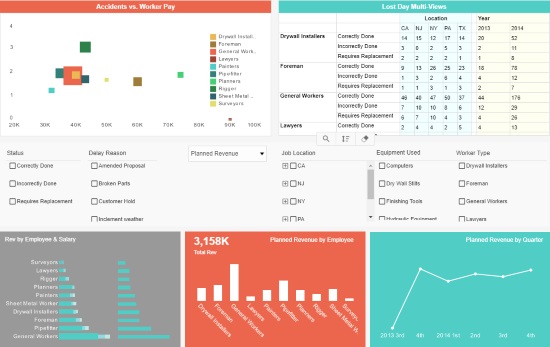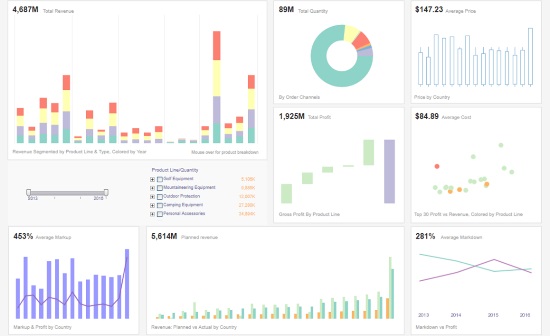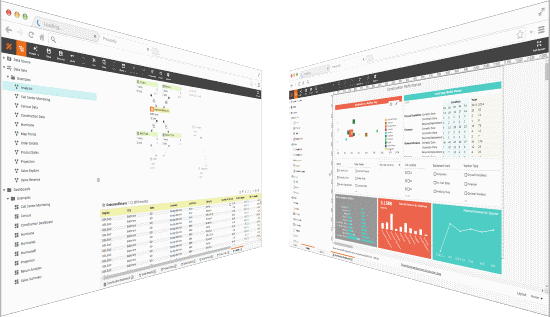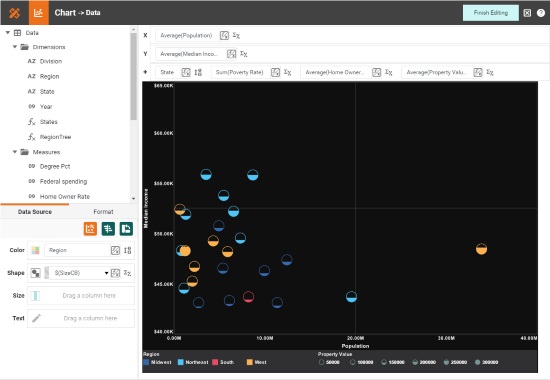InetSoft BI Webcast: Best Practices for Selecting KPIs
Below is a continuation of the transcript of a Webinar hosted by InetSoft on the topic of Best Practices for Key Performance Indicators. The presenter is Mark Flaherty, CMO at InetSoft.
Mark Flaherty (MF): There are a few best practices I can recommend when it comes to selecting key performance indicators, or KPIs. A middle-of-the road approach between a top-down and a bottom-up approach is recommended.
Some people talk about a hub-and-spoke approach to performance management, because on the one hand, you don’t want to do this in silos. You don’t want each department creating their own metrics which overlap or create inconsistencies with other departments. But on the other end, any enterprise that tries to centralize the management of metrics and all the associated governance will fail. Those BI initiatives collapse under their own weight and bureaucracy and red tape and too many processes.
Some kind of hub and spoke environment for performance metrics has its place. Anything that has to be managed and handled and monitored at a corporate level, anything that is mission-critical, anything that goes across the enterprise boundaries, all of this belongs in a hub.
But when it is the case that no one outside of a particular product line or a particular department is ever going to look at the metrics, for example, marketing campaign effectiveness metrics, where probably nobody outside of the marketing and sales departments is going to look at them, then create those on the spokes. The back office, finance and HR departments probably don’t need to know about these metrics. So make your performance metrics dashboard more agile based on the breadth of the audience.
Make KPIs Agile
Also make them agile by clearly delineating who is responsible for each metric in terms of IT versus business ownership. It is easy to say that the business really should own a metric. At the high level type of metrics, like profitability calculation or gross margin calculation, absolutely these should be created, measured, and monitored by the business stakeholders.
But if we go down the stack, the more detailed level metrics, things like customer counts, transaction volumes, these are also metrics and measures, and somebody has to own them. You have to understand where in that metrics stack, the lines of delineation are between what IT owns and what the business owns and governs.
So those are some of the best practices for effectively managing these metrics. Keep in mind the old saying, “Don’t try to boil the ocean.” Anyone who starts at the top level and says “let us define the key performance indicators for our entire enterprise, front-office, back-office, HR, finance, sales and marketing,” he is doomed to fail. The best practices call for finding the low-hanging fruit, something that can be implemented relatively painlessly and will achieve the biggest bang for the buck.
For instance, if you are suffering from low customer satisfaction, and you know you’re customers are leaving, then create a few metrics that let you monitor the reasons for customer satisfaction, the number of complaints, response time, et cetera. Quickly implement them; quickly get the ROI on the investment you have made focusing on those KPI’s. Then continue to chip away at the next pain points, never trying to tackle all the KPI’s at once.
| Previous: KPI Selection |



